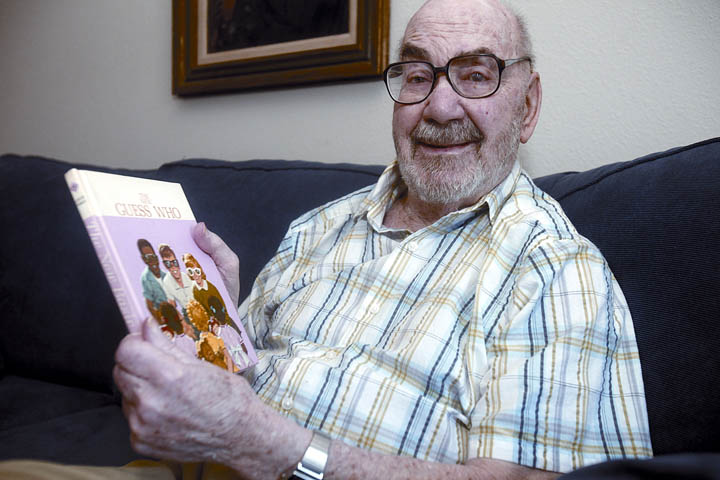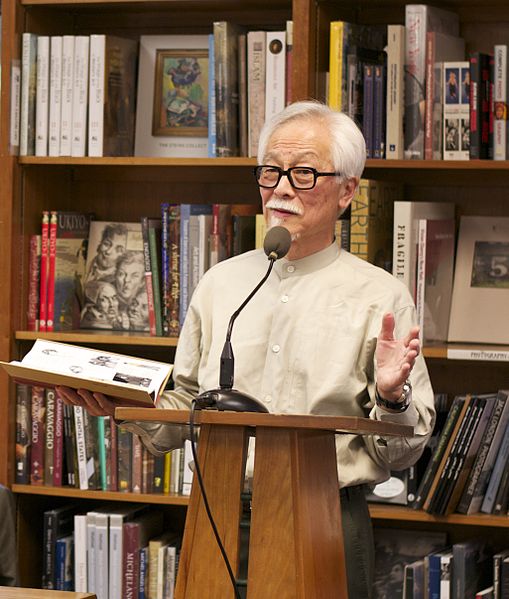Richard Henderson Wiley, one of Oregon’s most successful commercial artists, is best known by millions of people for his illustrations of the Dick and Jane reading series, published by Scott, Foresman & Co.
Richard Wiley was born July 26, 1919, in Lynchburg, Virginia, the youngest of five children of Edgar Clarence and Maud Stanley Wiley. He showed artistic interest early, and his high school art teacher especially encouraged him. Wiley enrolled at Syracuse University College of Fine Arts, but his education was interrupted by military service. Following basic training at Fort Belvoir, Virginia, he was assigned to the 29th Topographic Engineer Battalion, where his artistic talent was put to work drawing topographic maps and promotional posters. He also received valuable photography training, something that stood him in good stead later in his professional career when he photographed models for his drawings.
Wiley was stationed in Portland during World War II, working out of Glenhaven Elementary School on N.E. 82nd and Tillamook Streets. During his off hours, he and his Portland friend, Jack Dumas, worked for Associated Designers studio downtown. When he was discharged from the army in 1946, Wiley returned to Portland and joined the studio fulltime, beginning his life-long work as a free-lance illustrator. He met his wife, Lois Wilson, at the studio. His first job was drawing an advertisement of men’s hats for Lipman, Wolfe & Co. department store; he would later work for Oregon clothing giants Jantzen, Pendleton, and White Stag.
In 1960, when editors for Scott, Foresman were looking for a new illustrator for their Dick and Jane series, they remembered seeing a Wiley drawing. They got in touch with a New York agent to help find him, and Wiley met with the original Dick and Jane illustrator to discuss the work. For a freelance commercial artist, it was a singular opportunity. The reading series was used in four-fifths of the nation’s schools and was read by eighty-five million American children between 1930 and 1965 (when they were discontinued). Teachers continued to use the books in classrooms well into the 1970s.
When Wiley took over the illustrations in 1960, he was the artist for the Sally, Dick, and Jane pre-primers and junior primers, including The New Guess Who, and primers (Fun with Dick and Jane). He photographed children from Lakewood Elementary School in Lake Oswego and used the photos, as well as his wife Lois and their three children, as models. Wiley was particularly proud that he included African American characters—Mike, his twin sisters Pam and Penny, and their parents—in the book series in the early 1960s (More Fun with Our Friends).
Since the early 1930s, Dick and Jane, their families, friends, and pets entered the popular culture as symbols of childhood, and the books became synonymous with learning to read using the look-and-say or whole-word method. The popularity of Dick and Jane readers declined as an emphasis on phonics increased, and the nostalgic American landscape of white picket fences in the suburbs that Wiley had illustrated waned.
Richard Wiley retired in 1994. He died in November 2013, at the age of ninety-four.
-
![Richard Wiley in 2009.]()
Richard Wiley in 2009..
Richard Wiley in 2009. Photo by Jonathan House. Courtesy Tigard-Tualatin The Times.
-
![A page from a Dick Wiley-illustrated Dick and Jane Book.]()
A page from a Dick Wiley-illustrated Dick and Jane Book. .
A page from a Dick Wiley-illustrated Dick and Jane Book. Photo by Jonathan House. Courtesy Tigard-Tualatin The Times.
-
![Image Illustrator Dick Wiley talks about his time working on the Dick and Jane picture books.]()
Richard Wiley in 2009.
Image Illustrator Dick Wiley talks about his time working on the Dick and Jane picture books. Photo by Jonathan House. Courtesy Tigard-Tualatin The Times.
Related Entries
-
![Allen Say (1937-)]()
Allen Say (1937-)
Most of the books by artist and writer Allen Say are about his personal…
-
![Bob Books]()
Bob Books
Bob Books was the brainchild of Bobby Lynn Maslen, a preschool teacher …
Map This on the Oregon History WayFinder
The Oregon History Wayfinder is an interactive map that identifies significant places, people, and events in Oregon history.
Further Reading
Gray, William S., and Dorothy Horton. On Their Own in Reading: How to Give Children Independence in Attacking New Words. Chicago, Ill: Scott, Foresman, 1948 and 1960.
Whalley, Joyce I., and Tessa R. Chester. A History of Children’s Book Illustrations. London: John Murray, 1988.





